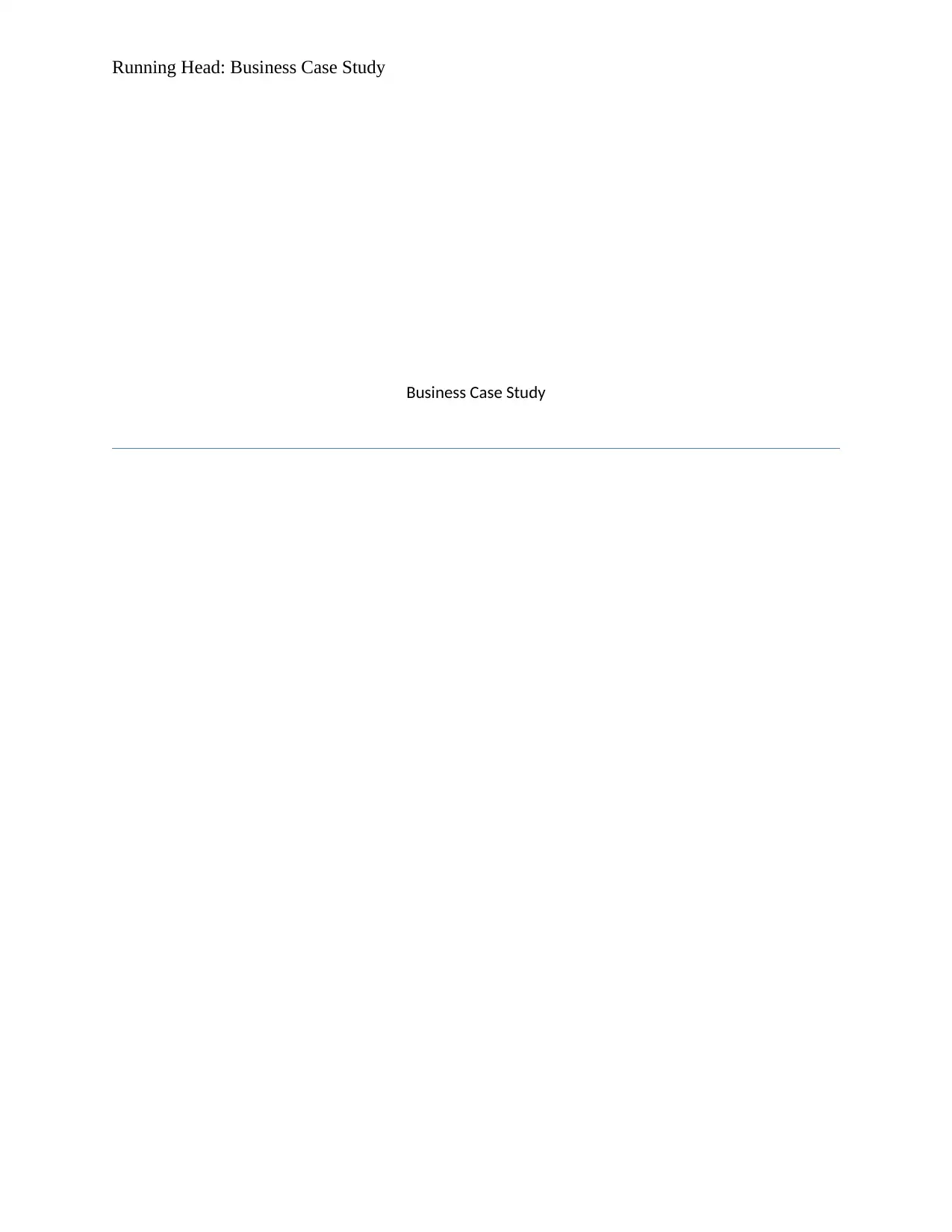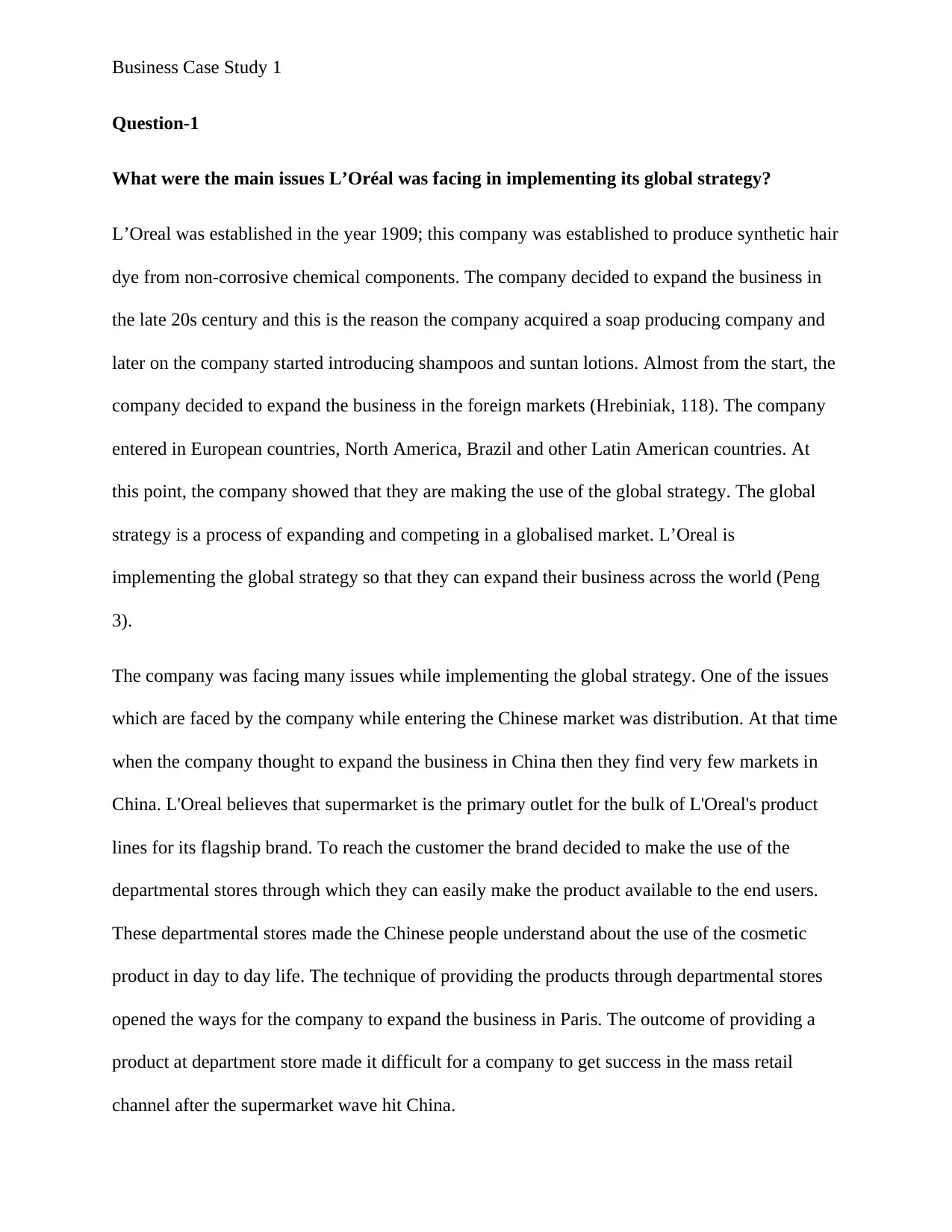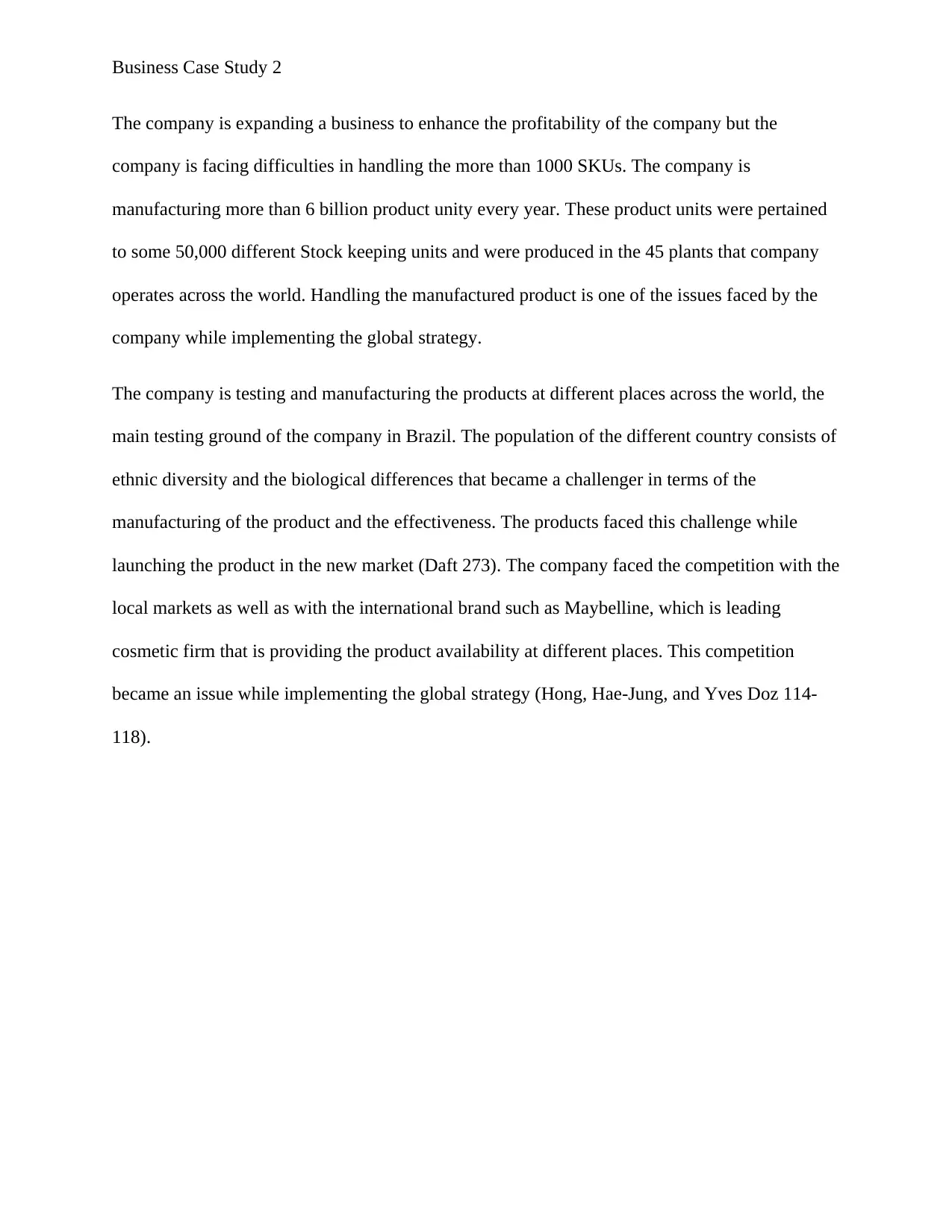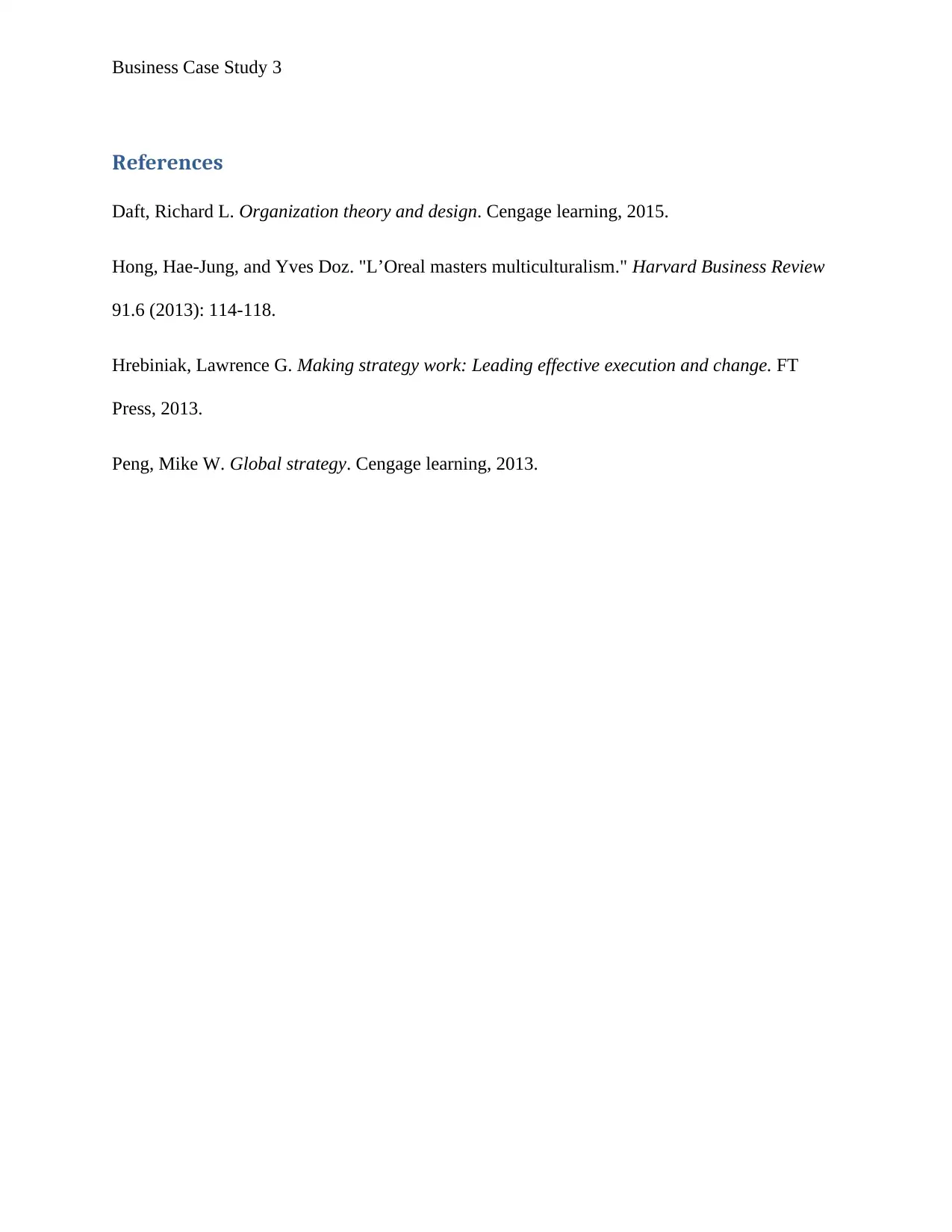Analyzing L'Oreal's Global Strategy: A Case Study Examination
VerifiedAdded on 2020/05/11
|4
|646
|342
Case Study
AI Summary
This case study analyzes L'Oreal's global strategy and the challenges it faced in implementing it. The company, expanding from its origins in hair dye to a broad range of cosmetic products, aimed to expand into global markets. Key issues included distribution problems in China, the complexities of managing a vast number of SKUs (Stock Keeping Units) across various manufacturing locations, and addressing diverse consumer needs due to ethnic and biological differences in different markets. L'Oreal also faced competition from both local brands and established international competitors like Maybelline. The analysis highlights the hurdles in entering new markets, adapting products, and maintaining a competitive edge within the global cosmetic industry. The company used department stores to expand but later had difficulty competing with the supermarket wave in China. The case study discusses the implications of these issues for the company's expansion and profitability, and the need for effective strategies to overcome these challenges.
1 out of 4








![[object Object]](/_next/static/media/star-bottom.7253800d.svg)